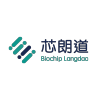Interleukin-6 (IL-6) Assay Kit (Magnetic Particle Chemiluminescence)
- FOB Price:Get Latest Price >
- Min.Order:1 Box(es)
- Payment Terms:T/T , PayPal
- Favorite
Business Type:Manufacturer
Country/Region:China
Ddu Verified
HOT Rank


Biochip Langdao (Tianjin)Medical Technology Limited
We are professional supplier of Nasal filter & allergy blocker,Clite-160i Analyzer,Serumamyloid A (SAA) Assay Kit,Gastrin 17 (G17) Assay Kit,Myoglobin (Myo) Assay Kit,Pepsinogen I (PGI) Assay Kit,Peps
Business Type:Manufacturer
Country/Region:China
Ddu Verified
HOT Rank

1.Product Overview
[product name] : Interleukin-6 (IL-6)
[Package Specification] : 30 tests/kit;60 tests/kit
[Applicable Device] : CLite-160i
[Specimen Type] : serum
[Storage] : 2-8℃
[Product validity] : 12 months
[Detection method] : magnetic particle chemiluminescence method
2.technique principle
Double antibody sandwich method was used in the kit. The detection principle is: the sample to be tested, R1 reagent, R2 reagent and M reagent are mixed for incubation, and the fluorescein (FITC) labeled IL-6 antibody 1 in R1 reagent and the alkaline phosphatase (ALP) labeled IL-6 antibody 2 in R2 reagent are combined with the IL-6 antigen molecules in the sample to form an immune complex. The immune complex is further captured by anti-FITC antibodies coupled to the surface of the magnetic particle and adsorbed to the surface of the magnetic particle. After washing, the unbound material was removed and the luminescent substrate was added, ALP catalyzed the luminescence of the substrate, and the relative luminescence intensity (RLU) was determined
3.The clinical significance
1). IL-6 is an important factor in local and systemic immune responses, as epithelial cells can secrete cytokines IL-6 and IL-8 during infection and inflammation. The bacterial infection in the body of children with neonatal sepsis produces inflammation, stimulating T and B cells, monocytes, and endothelial cells to secrete a large amount of IL-6. A large amount of IL-6 acts on the liver, synthesizing hypersensitive CRP. IL-6 promotes the expression of cell adhesion molecules and tissue factors in macrophages, induces the synthesis of hypersensitive C-reactive protein (hs CRP) in liver cells, and increases the concentration of hypersensitive CRP.
2). The concentration of IL-6 in surgical patients can predict the occurrence of surgical complications.
3). Continuous detection of IL-6 levels in the serum or plasma of critically ill patients can effectively assess the severity of systemic inflammatory response syndrome (SIRS).
4). After infection and inflammation occur, the IL-6 rate gradually increases and the level rapidly increases, reaching a peak at 2 hours. The elevated level is consistent with the severity of the infection and induces an increase in procalcitonin (PCT) and CRP, respectively, after 2 hours and 6 hours of infection.
5). The elevation of IL-6 is positively correlated with the severity of the disease, and the magnitude of the increase reflects the severity of the condition. Sustainably high levels of expression in critically ill patients can serve as a sensitive indicator for evaluating the severity and prognosis of sepsis and MODS patients, and can reflect the effectiveness of antibiotic treatment more quickly.
6). IL-6 has a higher sensitivity in distinguishing infection from non infection than IL-6 and CRP, and can also be used to evaluate the severity of infection and prognosis when IL-6>1000 μ A warning of poor prognosis in critically infected patients at g/L indicates that clinical physicians should adjust their diagnosis and treatment plans in a timely manner. Therefore, in recent years, IL-6 has become increasingly widely used as an inflammatory marker in clinical practice.
IL-6/IL-6 combination: IL-6 has high specificity for bacterial infectious diseases; IL-6 is highly sensitive to systemic bacterial infections. The combination of the two can improve the effective guidance of rational antibiotic use; The diagnostic efficacy of sepsis is stronger, helping to manage the entire course of sepsis.
4.Product features and indicators
High sensitivity: the detection limit is not higher than1. 5pg/mL;
Wide linear range: samples in the range of 1.5~5000.0 (pg/mL) do not need to be diluted;
Good correlation: c correlation R > 0.95 with ROCHE reagent;
Good stability: the calibration cycle can be up to 14 days, and the reagent can be stored at 4℃ for 1 year;
Fast results: only 16-18 minutes to get results.